Occupational Environment Monitoring at Nuclear Power Factory
99,000 ₫
Note: The above price is calculated for one sample; the price may fluctuate depending on the area of the environment to be monitored and market movements. For more accurate price support, please refer to the price list or contact our consulting staff directly.
Environmental monitoring of a nuclear power factory is a session of collecting, analyzing, and evaluating factors at the workplace that may be harmful to workers’ health.
Table of Contents
Toggle1. Overview of Nuclear Power Factories
a. What is a Nuclear Power Factory?
Factory nuclear power factory is a facility that generates electricity using energy from nuclear reactions. Nuclear power factories typically use nuclear reactions to produce heat, then use this heat to generate steam, and finally use the steam to drive an electricity generator.
The most common technology in nuclear power factories is thermal nuclear reactor technology. In a nuclear reactor, fuel atoms such as uranium or plutonium undergo nuclear reactions and interact with neutrons. When these nuclei react, energy is released as heat. This heat is then used to generate steam and converted into electricity through generators.
Nuclear power factories are considered a high-efficiency energy source and do not emit large amounts of carbon like coal or oil-fired thermal power factories. However, constructing and operating nuclear power factories require strict safety measures and control to ensure nuclear safety and prevent serious accidents.

b. Production Stages in Nuclear Power Factories
The production stages in nuclear power factories include the following steps:
- Mining and processing nuclear fuel: This process includes extracting materials such as uranium or plutonium and processing them into forms suitable for use in nuclear reactors. Stages include mining, crushing, refining, and producing nuclear fuel.
- Building nuclear reactors: This step involves constructing the necessary facilities and systems to operate a nuclear reactor. This includes constructing the main reactor, control systems, cooling systems, safety and protection systems, waste treatment systems, and other infrastructure.
- Operating and controlling the nuclear reactor: After construction, the nuclear reactor is started and operated. This involves controlling the nuclear reaction, ensuring safety, and optimizing reactor performance.
- Generating steam: Heat from the nuclear reactor is used to produce steam. This process usually involves a cooling system, where heat is transferred from the reactor to the steam.
- Generating electricity: Steam drives generators, converting energy into electricity. Generators may use steam turbines or gas turbines to produce electricity.
- Waste treatment: Production in nuclear power factories generates nuclear and other common wastes. These wastes must be safely treated and transported according to nuclear regulatory authorities.

c. Types of Machinery Used in Nuclear Power Factories
In nuclear power factories, various machines and equipment support production and operation. The following are commonly used machinery:
- Nuclear reactor: The main machinery in a nuclear power factory, where nuclear reactions generate heat. Types of reactors include catalytic reactors, thermal reactors, light-water fuel reactors, etc.
- Generators: Including steam turbines, gas turbines, and other generator types. Generators convert heat from nuclear reactors into electricity.
- Cooling systems: Include compressors, water pumps, and piping systems to ensure cooling for the reactor and thermal systems.
- Control and monitoring systems: Include automatic control devices, sensors, monitoring systems, and related software to control the reaction process and ensure operational safety.
- Waste treatment systems: Machinery and equipment for handling and transporting nuclear and common wastes, including air compressors, crushers, filtration systems, and packaging systems.
- Protection and safety systems: Safety devices such as gas detectors, fire alarms, fail-safe systems, explosion-proof systems, etc.
- Transportation systems: Machinery and equipment to transport nuclear fuel, construction materials, waste, cooling water, and other materials during production and operation.

d. Occupational Diseases for Workers in Nuclear Power Factories
Workers in nuclear power factories may be exposed to harmful and dangerous factors, leading to occupational disease risks. The following are common occupational diseases that nuclear power factory employees may encounter:
- Radiation-related diseases: Workers may be exposed to radiation from nuclear materials and reactions. High-level exposure can cause radiation sickness, including dermatitis, radiation pneumonitis, cancer, and other health issues.
- Respiratory diseases: Working in environments with particle dust, toxic vapors, or irritants can cause respiratory problems such as pneumonia, asthma, and other conditions.
- Cardiovascular diseases: Environmental factors such as high pressure, high temperature, and stressful work contribute to cardiovascular issues like hypertension, heart failure, and other heart-related problems.
- Digestive system diseases: Exposure to toxic or irritating substances can cause gastrointestinal issues such as gastritis, enteritis, and other digestive problems.
- Nervous system diseases: Factors like noise, vibration, and impacts from machinery contribute to nervous system problems, including stress, sleep disorders, and neurological issues.
To reduce occupational disease risks, nuclear power factories must strictly comply with nuclear safety regulations and procedures.

e. Nuclear Power Factories in Vietnam
Currently, Vietnam does not have operating nuclear power factories. However, plans exist to construct nuclear power factories to meet energy demands and contribute to sustainable national development. The first projects are planned in Ninh Thuan region, with technology from Russia (Ninh Thuan 1) and Japan (Ninh Thuan 2).
Constructing and operating nuclear power factories requires compliance with high safety standards, including nuclear security, nuclear waste management, and environmental protection. These projects are conducted under official supervision and in accordance with national and international nuclear regulations.
2. Overview of Occupational Environment Monitoring Services
a. What is Occupational Environment Monitoring in Nuclear Power Factories?
Occupational environment monitoring (or workplace environmental measurement) in nuclear power factories involves collecting, evaluating, and analyzing workplace environmental indicators at the factory to implement timely measures, minimize environmental hazards to worker health, and prevent occupational diseases. Occupational environment monitoring is mandatory for nuclear power factories.
This monitoring is crucial for protecting and enhancing workers’ health, as employees are the primary resource and directly generate business profit. Workers regularly exposed to occupational hazards beyond permissible limits are at risk of health issues and occupational diseases.
REGISTER FOR OCCUPATIONAL ENVIRONMENT MONITORING SERVICE
b. Nam Viet’s Occupational Environment Monitoring Program
Nam Viet’s occupational environment monitoring program is developed by engineers in labor safety and environmental protection. The program ensures workers’ health and safety, using modern measurement methods to monitor air, water, and microclimate, physical, and dust factors in the workplace. This program is essential for ensuring safe working conditions and protecting workers’ health.
Additionally, Nam Viet’s program helps research and develop solutions to improve workplace environmental quality. With a dedicated and professional monitoring team, Nam Viet’s exclusive program represents a breakthrough in occupational safety and environmental management in Vietnam.

c. Standardization in Workplace Environmental Measurement Procedures
Standardization in Nam Viet’s measurement procedures ensures the accuracy and reliability of results. The program uses recognized standards and procedures from Ho Chi Minh City Department of Health. This guarantees high-reliability data for evaluating workplace environments and making informed improvement decisions.
These standardized procedures ensure that results are conducted by highly qualified monitoring specialists with years of experience, giving managers confidence in An Toan Nam Viet’s results and supporting accurate, valuable decisions for worker health and environmental protection.
Standardized measurement procedures demonstrate Nam Viet’s commitment to a safe workplace and contribute positively to labor safety and environmental management development in Vietnam.
d. Nuclear Power Factory Monitoring Report
Occupational environment monitoring results are prepared according to Form 04 Appendix III of Decree 44/2016/ND-CP and created in two copies: one sent to the contracting factory and one retained by the monitoring organization.
Monitoring results must be retained indefinitely according to legal regulations.

e. Frequency of Workplace Environmental Monitoring According to Law
According to Clause 2, Article 18, Labor Safety and Hygiene Law 84/2015/QH13, employers must organize workplace environmental monitoring to assess harmful factors at least once a year.
f. Deadline for Submitting Workplace Environmental Monitoring Reports According to Law
The deadline for submission is before December 31 annually. Enterprises must submit monitoring results to the local Department of Health where the factory is headquartered and where employees work.
When there are changes in technology, production processes, or during factory upgrades that may introduce new hazards, enterprises must update labor hygiene records regarding harmful factors and perform environmental monitoring accordingly.
g. Penalties for Violating Workplace Environmental Monitoring Regulations
According to Article 27, Decree No. 12/2022/ND-CP dated 17/01/2022 on administrative penalties in labor, social insurance, and Vietnamese workers working abroad under contracts:
- Clause 2: Fines of 2,000,000 – 5,000,000 VND for employers who fail to publicly inform employees at monitoring sites or places of inspection about monitoring results and hazardous factor evaluations immediately after results are available.
- Clause 3: Fines of 20,000,000 – 40,000,000 VND for employers who fail to conduct environmental monitoring to control hazards affecting workers’ health according to law.
- Clause 4: Fines of 40,000,000 – 60,000,000 VND for employers who cooperate with monitoring organizations in fraudulent activities but not to the level of criminal liability.
3. Harmful environmental factors for workers in nuclear power factories
Workers in nuclear power factories may be exposed to harmful environmental factors. Below are some environmental factors that may affect workers in nuclear power factories:
- Radiation: Workers are at risk of exposure to radiation from nuclear materials and nuclear reactions. Radiation can damage cells and tissues in the body, causing health problems such as cancer, affecting the immune system, and harming the reproductive system.
- Nuclear waste: Nuclear power factories produce nuclear waste, including solid, liquid, and gaseous waste. These wastes may contain radioactive materials and other pollutants. Workers must ensure safe handling and transportation of nuclear waste to avoid exposure.
- Fumes and particulate matter: During operations, nuclear power factories may generate fumes and particles from nuclear materials. Exposure to these fumes and particles can harm the respiratory system, cause pneumonia, or lead to other health issues.
- Temperature and pressure: The working environment in nuclear power factories may have high temperature and pressure. Workers must follow personal protection measures and manage temperature and pressure to avoid risks from these environmental conditions.
- Chemicals: Processes in nuclear power factories may use chemicals such as solvents, cleaning agents, and other additives. Workers need to be trained on safe usage of these chemicals and comply with occupational safety regulations.
4. Measures to improve the working environment in nuclear power factories
Improving the working environment in nuclear power factories is crucial to ensure safety and protect workers’ health. Below are some measures to improve the working environment in nuclear power factories:
- Ensure radiation safety: Nuclear power factories need to apply radiation protection measures such as using shielding materials, controlling radiation levels in air and water, and ensuring work areas are safely protected.
- Manage nuclear waste: Ensure handling, storage, and transportation of nuclear waste are carried out according to safety regulations and procedures. This includes using nuclear waste treatment systems, ensuring safe packaging, and managing them in specialized environments.
- Respiratory protection: Provide respiratory protective equipment and ensure proper use to prevent exposure to fumes, particulate matter, and irritants during work.
- Adjust temperature and pressure: Ensure that work areas are adjusted for appropriate temperature and pressure to reduce risks for workers and provide safe and comfortable working conditions.
- Training and education: Provide workers with comprehensive training and education on nuclear safety, safety regulations and procedures, use of protective equipment, and handling of nuclear waste. This enhances workers’ awareness and skills, reducing the risk of injury.
- Risk management: Implement comprehensive risk management, including risk assessment, identifying preventive and control measures, and periodic monitoring and evaluation to ensure effectiveness of protective measures.
- Continuous improvement: Build a culture of safety and continuous improvement in nuclear power factories, ensuring participation of all employees and identifying and applying measures to enhance working environment and nuclear safety.
- Periodically organize occupational environmental monitoring in factories, collect and analyze harmful factors for workers, and adjust to reduce hazards and prevent occupational diseases for them.
5. Benefits of regular monitoring in nuclear power factories
An Toan Nam Viet provides businesses with excellent advantages when using occupational environmental monitoring services according to Decree 44/2016/ND-CP on management and control of harmful factors in the working environment affecting workers.
- Businesses can proactively control harmful factors in workshops or factories.
- Receive advice and recommendations on measures to reduce harmful factors and improve the quality of the working environment.
- Indirectly protect human resources, the key factor in business development.
- Reduce the impact of occupational diseases on human health, thereby reducing future treatment costs.
- Improved worker health leads to better product quality and production output.
- Comply with labor safety laws, avoiding legal risks.
- Create credibility and professionalism in all aspects, enhancing the company’s brand.
Nam Viet’s environmental monitoring service is a solution to reduce the impact of occupational diseases, contributing to a clean and quality working environment.

REGISTER FOR OCCUPATIONAL ENVIRONMENTAL MONITORING SERVICE
6. National Occupational Environmental Monitoring Center
Occupational Environmental Monitoring Center of Nam Viet is a professional unit specializing in monitoring and measuring the quality of the working environment across all provinces in Vietnam. With a team of experienced monitoring specialists, the center uses modern measurement equipment to ensure accuracy and reliability.
Besides providing monitoring services, the center also assists customers in planning, handling, and tracking occupational environmental issues. With the motto “customer-centered,” the center prioritizes customer satisfaction, meets all customer needs, and commits to providing the best solutions for businesses.
REGISTER FOR OCCUPATIONAL ENVIRONMENTAL MONITORING SERVICE
With investment in technology, equipment, and human resources, Nam Viet’s monitoring center has become one of the most reputable units in occupational environmental monitoring in Ho Chi Minh City with the following objectives:
- We always value brand reputation and the quality of our services.
- We provide customers with the best and most suitable solutions.
- With a team of experienced Masters and Engineers committed to environmental protection and business benefits.
- By joining Nam Viet Environmental Monitoring team, your company will receive professional service from experts in the field of monitoring, along with the best cost advantages.
The occupational environmental monitoring process at Nam Viet includes the following basic steps:
- Before performing monitoring, we ensure all machines and equipment for occupational environmental monitoring are calibrated according to legal regulations.
- Perform the monitoring process in full compliance with the procedure committed to the Department of Health.
- Report occupational environmental monitoring results honestly to the employer.
- If monitoring results show unsafe conditions for workers, Nam Viet will provide solutions, and the enterprise will implement as follows:
- Implement measures to improve working conditions to minimize the impact of harmful factors and prevent occupational diseases.
- Organize health check-ups to detect occupational and work-related diseases early for employees in unsafe working environments.
- Provide material compensation to employees according to labor law regulations.

7. Occupational Environmental Monitoring Pricing
To help businesses perform occupational environmental monitoring professionally and effectively, Nam Viet provides customers with a pricing table for occupational environmental monitoring services that is high-quality and reasonably priced.
- Our pricing table provides detailed information on the costs of the monitoring services we offer, including costs related to travel, measurement, analysis, and reporting. Customers can be assured of the accuracy and reliability of the monitoring results we provide.
- We commit to providing competitive and reasonable prices in the market and are always ready to answer any questions about monitoring services quickly and professionally.
- With Nam Viet’s pricing table, customers can easily choose service packages suitable for their needs. We are committed to providing the highest customer satisfaction with professional service quality.
1 review for Occupational Environment Monitoring at Nuclear Power Factory
No comments yet

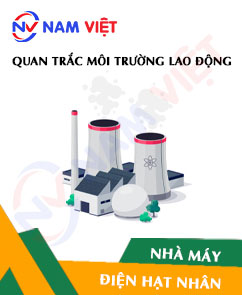
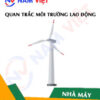
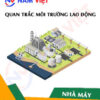
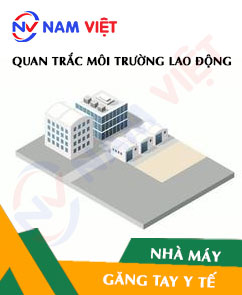
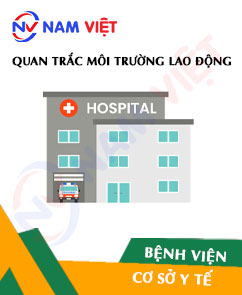






maituyet.cuong12
Good labor environment monitoring service!